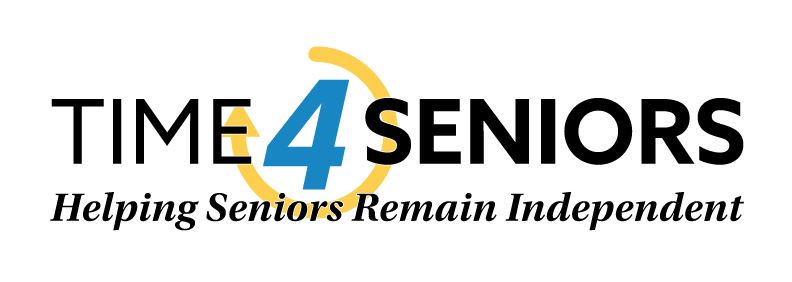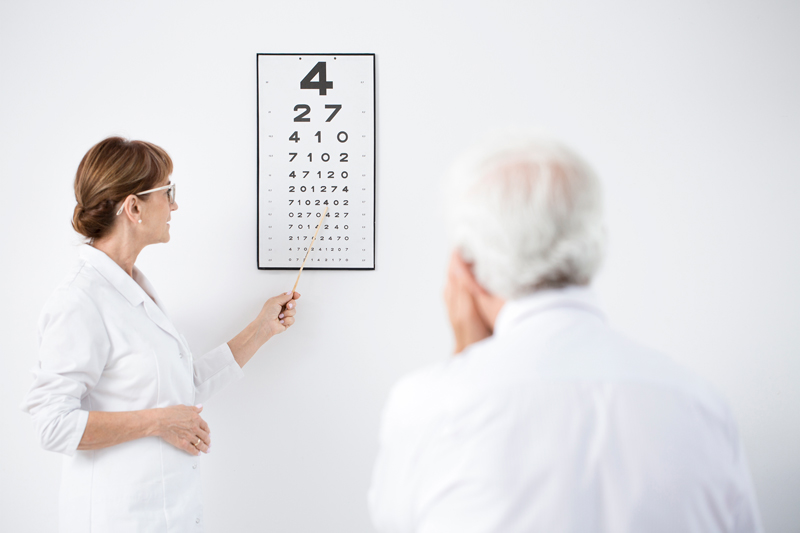Seniors and Vision:
6 Common Maladies & 3 Must-Have Exams
The title of Art Linkletter’s 1990 book, Old Age is Not for Sissies”, says it all. Growing older is not always fun. Wisdom has been accrued, but with age comes the inevitable decline of our physical body. The area of decline that is, perhaps, most visible (pun intended) is vision. My problems began at about age forty-five when I started having trouble reading the small print. Since then I have relied on “drugstore cheaters” to help with reading.
In my first article on independence, I cited a study by the American Foundation for the Blind which stated that over 12% of people age 65 and older have age-related vision problems. In a 2016 article, the CDC summarized numerous studies stating, “Cases of early age-related macular degeneration are expected to double by 2050, from 9.1 million to 17.8 million for those aged 50 years or older. Cases of diabetic retinopathy among people aged 65 or older are expected to quadruple by 2050, from 2.5 million to 9.9 million.”
Turning a Blind Eye
Turning a blind eye to vision challenges is not the answer. Today there are approximately 50 million seniors age 65 or older in the US, and the Census Bureau predicts that number will increase to 70 million by 2030. That’s a 40% increase! As the senior population increases, so will its health problems, including eyesight. I will be sharing with you today, the six most common problems faced by seniors regarding eyesight as well as three exams you will want your ophthalmologist to run.
- Glaucoma – Here, the pressure of the eyeball has risen and is damaging the optic nerve. In its early stages, there are no obvious warning signs. Over time though, one’s peripheral vision will decrease, and left untreated could result in permanent tunnel vision. Initial treatment to reduce pressure is eye drops. If this proves ineffective, then laser surgery may be required.
- Dry Eyes – This occurs for one of two reasons. The eye may not produce enough tears or they evaporate too quickly. There are a number of causes including the use of contact lens, exposure to tobacco smoke or vitamin A deficiency. Treatment will vary, depending on the cause, but can include artificial tears, wraparound glasses or medication.
- Cataracts –Normally, the eye’s lens is transparent. However, if the lens becomes cloudy from the clumping of proteins, vision can become impaired. Symptoms include blurred vision, inability to drive at night, double vision and seeing halos around lights. Glasses may initially help, but usually, surgery is required.
- Macular Degeneration –Known as AMD, Age-Related Macular Degeneration, this is a degeneration of the macula, the area near the retina allowing us to focus and discern colors. Symptoms include blurred or “wavy” vision. Usually, one’s peripheral vision is unaffected and people suffering from this will not be completely blind. Treatment of AMD includes laser surgery, drug injections and in low levels of AMD, corrective glasses.
- Diabetic Retinopathy – A disorder complicated by diabetes. Diabetics have trouble regulating insulin and blood sugar levels. Abnormal changes in the retina’s blood vessels cause “them to become leaky and grow where they should not. These new vessels tend to break and bleed. As they try to heal, the damaged blood vessels will contract and detach the retina.” The most common complaint of sufferers is dark objects that seemingly “float” across the field of vision. The most common treatment is laser surgery, which can be effective if the retina has not been severely damaged.
- Presbyopia – Is the direct result of aging and a hardening of the lens. In layman’s terms, it is age related farsightedness. Symptoms include a worsening ability to focus clearly on objects nearby or reading the small print. Treatment is to use reading glasses.
The diseases listed above are not exhaustive. They are merely the most common brought about by aging. Taking care of our eyes is important. Arguably, eyesight is the most basic requirement for independence. We almost always need to see what it is we’re doing. It is imperative, therefore, to have at least an annual checkup with your local ophthalmologist, letting them check your eyesight and prevent possible problems. Marlo Sollitto, a journalist specializing in healthcare and technology, in a 2017 article specified 3 eye exams every senior should have.
3 Eye Exams Every Senior Should Have
- Acuity Test – This is the all too familiar eye chart, measuring from various distances how well you can see.
- Pupil Dilation –Eye drops are used to enlarge the pupil, allowing “the doctor to view more of the retina and look for signs of disease.”
- Tonometry –This test determines “fluid pressure inside the eye.” The most common method used for screening high intraocular pressure is the “air puff” test, where a low blast of air is shot against the cornea.
It’s important to be aware of what changes seniors should expect regarding their sight. It’s equally important to know that if caught early these changes can be dealt with and a high quality of life maintained. I hope you have found this article helpful. Next week I will be sharing ways to adapt to changes in your sight.


Recent Comments